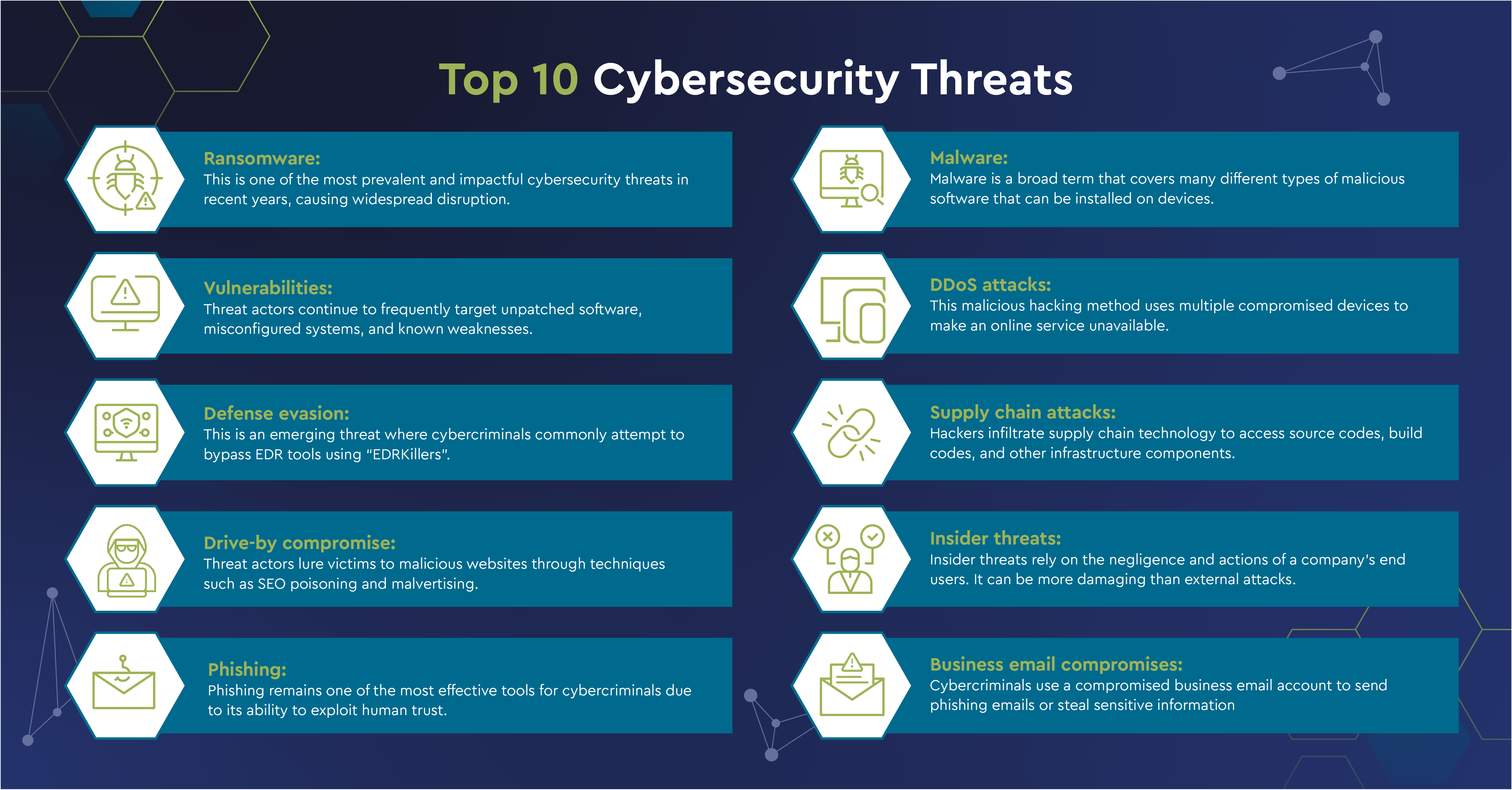The Rise of Ransomware: A Modern Threat

10 common cybersecurity threats and attacks: 2025 update | ConnectWise
Ransomware has become a top priority for cybersecurity experts in recent years. This type of malware demands payment in exchange for restoring access to encrypted data. The rise of ransomware can be attributed to several factors, including the increasing use of cloud storage services and the growing importance of data protection.
In this article, we’ll delve into the world of ransomware, explore its tactics and techniques, and provide actionable strategies for businesses to stay safe.
How Ransomware Attacks Work
Ransomware attacks typically follow a similar pattern:
1. Malicious code is injected into a victim’s system via phishing emails, infected software downloads, or exploited vulnerabilities.
2. The ransomware encrypts the victim’s data using strong algorithms and demands payment in exchange for the decryption key.
3. The attacker waits for payment before releasing the decryption key, leaving the victim with no choice but to comply.
The Impact of Ransomware Attacks
Ransomware attacks can have severe consequences for businesses, including:
- Loss of critical data and intellectual property: Ransomware attacks can result in the loss of sensitive information, including customer data, financial records, and confidential business documents.
- Disruption of operations and revenue loss: A ransomware attack can disrupt business operations, leading to lost productivity, reduced revenue, and potential damage to a company’s reputation.
- Reputation damage and loss of customer trust: If a business is unable to protect its customers’ data, it may suffer reputational damage and lose the trust of its clients.
Prevention is the Best Defense: Strategies for Protection
While no security solution can guarantee complete protection against ransomware, there are several strategies that can significantly reduce the risk:
- Implement robust antivirus software and keep it up-to-date: The latest antivirus software can detect and prevent ransomware attacks.
- Use strong passwords and multi-factor authentication: Strong passwords and multi-factor authentication can make it more difficult for attackers to gain access to systems and data.
- Regularly back up critical data to a secure location: Regular backups can provide a safety net in case of a ransomware attack, ensuring that critical data is not lost forever.
- Conduct regular security audits and implement vulnerability patches: Regular security audits and vulnerability patches can identify and fix weaknesses in systems and software before they can be exploited by attackers.
Incident Response: What to Do in the Event of an Attack
In the event of a ransomware attack, it’s essential to act quickly and follow a well-defined incident response plan:
- Contain the spread of the malware by disconnecting affected systems from the network.
- Assess the damage and identify the scope of the attack.
- Evaluate payment options and consider seeking professional help if necessary.
The Role of Artificial Intelligence in Ransomware Detection
Artificial intelligence (AI) can play a significant role in detecting ransomware attacks by analyzing network traffic patterns, identifying suspicious activity, and predicting potential threats:
- AI-powered security solutions can monitor network activity for signs of malicious code injection.
- Machine learning algorithms can analyze data patterns to identify anomalies that may indicate a ransomware attack.
The Future of Ransomware Protection: Emerging Technologies and Trends

ENISA Threat Landscape 2024 identifies availability, ransomware …
As ransomware continues to evolve, it’s essential to stay ahead of the curve with emerging technologies and trends:
- Cloud-based security solutions can provide real-time protection against ransomware attacks.
- Blockchain technology can offer a secure way to store and manage encryption keys.
- Advanced threat detection systems can identify and respond to ransomware attacks in real-time.
Case Study: The NotPetya Ransomware Attack
In 2017, a devastating ransomware attack known as NotPetya infected hundreds of thousands of computers worldwide. The attack was estimated to have caused over $10 billion in damages and affected companies across multiple industries, including healthcare, finance, and manufacturing.
The attack began with a phishing email that tricked employees into opening an attachment containing the malware. Once the malware was executed, it encrypted files on the infected computer and demanded payment in Bitcoin in exchange for the decryption key.
In this case study, we’ll explore what could have been done to prevent or mitigate the impact of the NotPetya attack:
- Implementing robust antivirus software and keeping it up-to-date.
- Using strong passwords and multi-factor authentication.
- Regularly backing up critical data to a secure location.
- Conducting regular security audits and implementing vulnerability patches.
Practical Tips for Ransomware Protection
Here are some practical tips for businesses to protect themselves from ransomware attacks:
- Use a reputable antivirus software that includes anti-ransomware protection.
- Avoid using pirated or cracked software, as it can increase the risk of infection.
- Use strong passwords and multi-factor authentication for all accounts.
- Regularly back up critical data to a secure location, such as an external hard drive or cloud storage service.
- Conduct regular security audits and implement vulnerability patches.
Advanced Ransomware Detection Techniques
Here are some advanced techniques that can help detect ransomware attacks:
- Use machine learning algorithms to analyze network traffic patterns and identify anomalies.
- Implement real-time threat detection systems that can respond to ransomware attacks in seconds.
- Use sandboxing technology to isolate infected systems and prevent the spread of malware.
Conclusion: Staying Safe in a Ransomware-Infested World
In conclusion, ransomware is a significant threat that requires businesses to be proactive in their security measures. By implementing robust protection strategies, staying informed about emerging technologies, and following a well-defined incident response plan, organizations can reduce the risk of a successful attack.
Remember, prevention is key – stay vigilant, stay safe!
Additional Resources
For more information on ransomware protection and detection techniques, please refer to the following resources:
- The Cybersecurity and Infrastructure Security Agency (CISA) provides guidance on preventing and responding to ransomware attacks.
- The National Institute of Standards and Technology (NIST) publishes guidelines for protecting against ransomware attacks.
- The International Association of Computer Investigative Specialists (IACIS) offers training and certification programs for cybersecurity professionals.
By following the principles outlined in this article, you can significantly reduce the risk of a successful ransomware attack and ensure the integrity of your organization’s data.
The Top 10 Cybersecurity Threats and How to Mitigate Them – Keepnet
